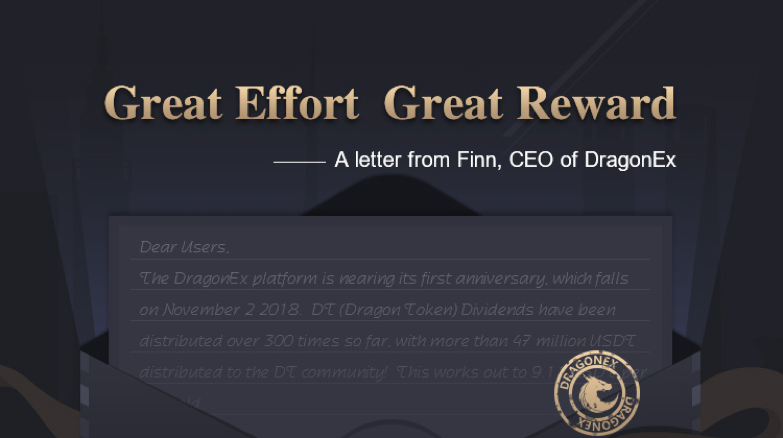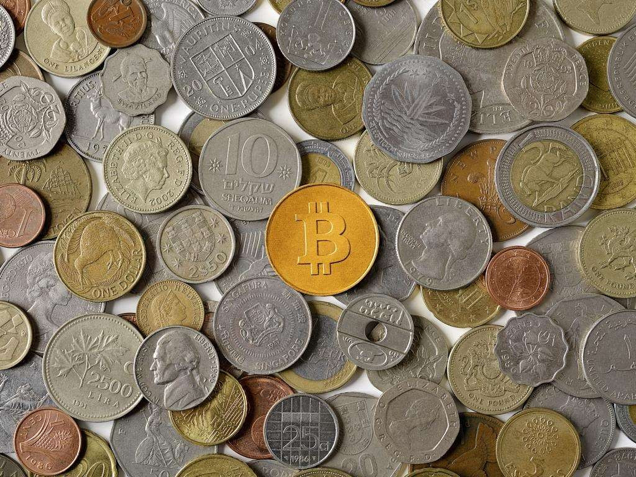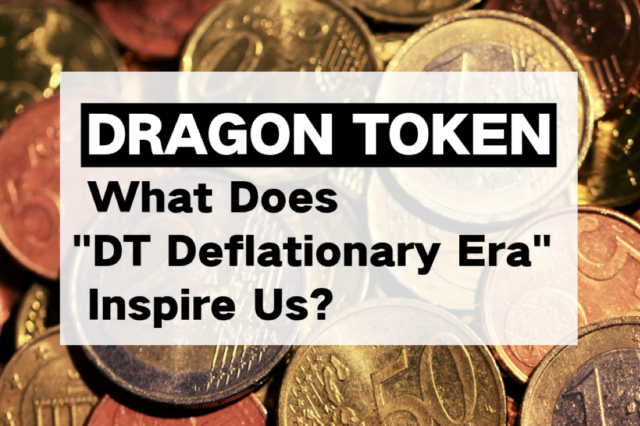Several days ago, DragonEx announced that the production of Dragon Token would decrease by half as from November 2, 2018, according to the smart contract, and they would also reduce their token share to ensure that Dragon Token would step into a deflationary period, with the return of interests to their communities.
What are inflation and deplation of tokens?

Inflation of tokens refers to a condition when there is too much supply of the token into the digital market leading to the decrease in value. On the other hand, deflation of tokens could imply decreasing production of this token which leads to increasing value of it. There has been inflation of Dragon Token (DT) since it’s launched on November 2, 2017. Technically, the inflation lowers the value of each DT on a daily basis. However, the condition is being different since the mining difficulty will increase from November 2, 2018 according to the DT Smart Contract. With the supply of DT reduced, the value of it will increase and be able to stabilize with time. At the same time, the inflation of DT will be significantly reduced which will then result to deflation of the token.
How DT inflation comes to an end?
DT is generated through mining, with a total volume of 37,339,500. The smart contract releases once per 24-hour, which counts to 3,650 times in total. Each cycle consists of 365 releases and every release has 51,200 outputs of DT during the first cycle, which will be halved for the next cycle period. The whole process will be repeated and the production of DT will decrease which means that their value will gradually increase, leading to deflation mechanism.
DT deflationary era

It was mentioned in the announcement With Great Effort and Commitment Comes Great Reward on DragonEx, “DT (Dragon Token) Dividends have been distributed over 300 times so far, with more than 47 million USDT distributed to the DT community! This works out to 9.11 USDT per DT held.” According to the smart contract, the production of this token will keep on decreasing. And in the meanwhile, the repurchased dragon token will be burned to ensure a shift occurs from inflation to deflation.
How does DT deflation work?
By November 2, 2018, it is estimated that about 18,688,000 DT will have released. According to the DT smart contract, the production of DT will decrease from 51,200 to 25,600 every 24 hours. Thereafter, DragonEx team will burn the permanent frozen DT that is not in the market circulation so that the total amount of DT will never go beyond 18,688,000. The trend is expected to continue even for the coming years such that by November 2, 2019, the share of DT held by DragonEx will be reduced from 50% to 25%, whereby at the same date 2020 it will have reduced to 12.5%.
As the mining of token regresses, the decrement cycle of the dragon token will enter into the deflation period. Assuming that everything in the market remains at its expected condition, and then this will imply that a reduction in holding capacity is in good faith to maintain the stability of investors’ interest.
What can we learn from this?

The majority of the tokens issued by blockchain technology are in the inflation phase. Only a few that has adopted the new deflation trend because it’s still a new concept in the market. It is observed that it’s difficult to control huge inflation in a broad-based blockchain technology when it’s still in early stages. However, it becomes very necessary for another developmental phase so that a coin or token maintains its value. In general, the deflation mechanism is expected to assist stabilizing cryptocurrency project and attract investors to do investment when is more stable with high equity value.
However, will it work? And who will be the next DragonEx?
Let’s wait and see!


